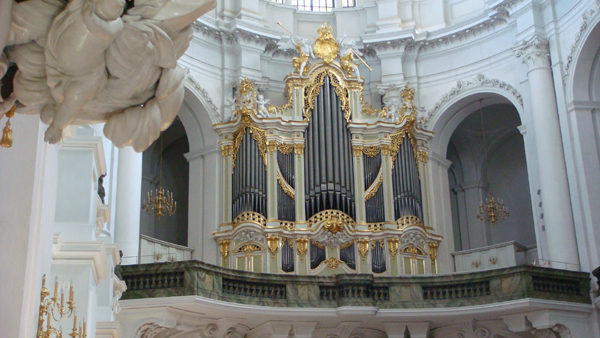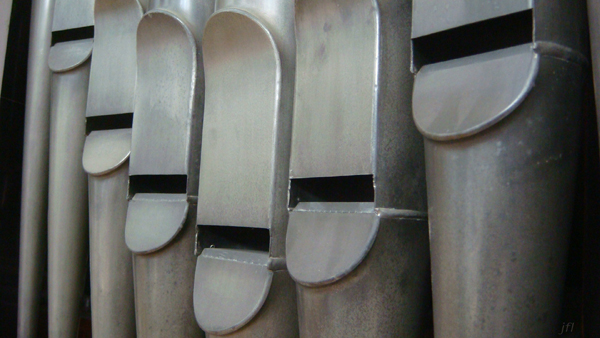 Germany Mozart: Martin Haselböck (Silbermann organ), Hofkirche, Dresden, 22.5.2012 (JFL)
Germany Mozart: Martin Haselböck (Silbermann organ), Hofkirche, Dresden, 22.5.2012 (JFL)
Bach: Toccata & Fugue BWV 565, Schübler Chorales BWV 645-650, Toccata, Adagio & Fugue BWV 564, Partite diverse BWV768, Toccata & Fugue BWV538


I am in beautiful Dresden – birthplace of the toothpaste – for the annual three-week Music Festival that has taken place since 1978. After Kristian Bezuidenhout’s very attractive Mozart recital on my first night here, I was headed for another concert that had all the makings of an absolute highlight: an all Bach recital on the historic Silbermann organ in Dresden’s Katholische Hofkirche, the Catholic Church of the Royal Court of Saxony that the catholic ruler had built, to achieve ecclesiastic balance as the protestant townspeople put their efforts into building the Frauenkirche.
I’m highly susceptible to all-Bach in a church, and when I heard Pieter van Dijk in the Oslo Cathedral earlier this year, it was all quiet ecstasy and elation. With the historic instrument in the back and the church’s white walls cast in the evening sun’s friendly warm light, the ears were perked and the tear ducts prepared. What a shame then that Martin Haselböck’s recital merited only tears of anguish, and perhaps worry for the instrument1. Haphazard and inept, the program seemed like an hour-long meditation on the sufferings of innocent Johann Sebastian Bach, played at speeds considerably faster than Haselböck’s fingers, and with the music well ahead of the rhythm throughout.
  J.S.Bach, Organ Works, performed on Silbermann Organs Berlin Classics     |
The apocryphal but too-famous-not-to-be-by-Bach Toccata & Fugue in d-minor BWV 556 ran away as soon as it started, never to be caught up with again. The fugue was, as almost everything else in this recital, a bloody mess with no chance whatsoever for Bach’s invariably compelling rhythmic force to strike. The six Schübler Chorales (BWV 645-650) were devoid of any spiritual element whatsoever, just a race to the finish and so bungled along the way that during “Kommst du nun, Jesu” it sounded as though a long defunct part of the organ got in a tangle and played bits back, with a ten second delay and a tone much like the croaking hoot of a dented fire truck. A gentleman with an increasingly worried look next to me inquired under his breath whether the noise came from the instrument. One was afraid, that yes, it did. It was, in a way, like involuntarily witnessing the slow implosion of instrument, or performer, or Bach, or all three. There is little point in pointing out brief moments of respite and competence during the Adagio-Grave of the C-major Toccata (BWV 564), which lasted for half a minute before Haselböck tripped himself up again – much like he did in the very briefly promising beginning of the Partite diverse sopra il Corale, “Sei gegrüßet, Jesu gütig” (BWV 768). If Haselböck had only just pressed the requisite notes down all at once, the concert would have been considerably more efficient, mercifully shorter, and frankly not much worse.
Gottfried Silbermann died 259 years ago whilst working on his organ at the Hofkirche. In a way he was dying all over again, last night.
Jens F. Laurson
1 That particular worry proved unfounded; the next day the church’s regular organist produced a beautiful mid-day recital of Bach & beyond, open to all.
